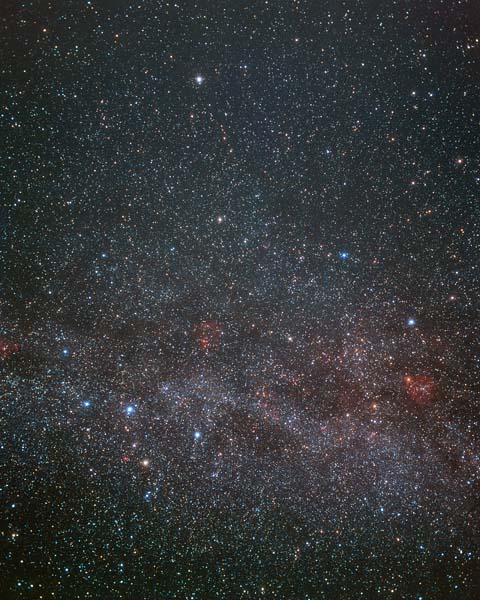DMI image reference Cep. « Previous || Next » Constellations A » H || Constellations I » V

Roll mouse over picture to see constellation figures and outlines
Image and text ©2008 Akira Fujii/David Malin Images.
In the picture above, top is north and the image covers 41.5 x 51.9 degrees.
Image centre is located at 00:56:49.5, +65:11:2 (H:M:S, D:M:S, J2000) Astrometric data from Astrometry.net.
Best seen in the early evening in November
Cepheus is a representation of King Cepheus of Ethiopia, who has stellar connections, being husband to Cassiopeia and the father of Andromeda. It is a large northern constellation of 588 square degrees, 27th out of 88 in size and is best seen in the early evening in November. It is distinguished by having two unusual stars that are easily seen, and both are marked with Greek letters in the mouseover image above.
Delta (δ) Cephei is the prototype for an intrinsically bright class of regularly pulsating variable stars whose period of variability is closely related to their absolute magnitudes. The brightest stars have the longest period, so distance can be estimated by measuring the period and the apparent magnitude of a star. And these stars are bright, so the method can be extended to nearby galaxies. Mu (μ) Cephei is an extremely red, irregular variable star easily seen in binoculars. This too is a prototype, of a class of stars known as semi-regular variables.
Cassiopeia is described elsewhere
Named stars in Cephus(Greek alphabet)
Aderamin (α Cep), Alfirk (β Cep), Alrai (El Rai, γ Cep), Erakis (Garnet Star, μ Cep), Kurhah (ξ Cep).
Named stars in Cassiopeia
Caph (β Cas), Cih (γ Cas), Ruchbah (δ Cas), Schedar (α Cas), Segin (ε Cas).
Constellations adjoining Cephus: Camopardalis, Cassiopeia, Cygnus, Draco, Lacerta, Ursa Minor.
Constellations adjoining Cassiopeia: Andromeda, Camopardalis, Cephus, Cygnus, Lacerta, Perseus.